Frame and fortune: How early photographers changed the world
24 February 2015
Tate Britain is hosting the country's first ever exhibition of salted paper prints - a pioneering form of photography developed in the mid 19th century which revolutionised the art world. Salt and Silver: Early Photography 1840-1860 – a collaboration with the Wilson Centre for Photography – features some of the rarest and best examples of the form. WILLIAM COOK took a closer look ahead of the opening on 25 February.
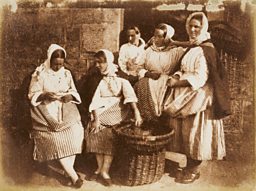
In 1839, a mathematician and astronomer (and sometime MP) called William Fox Talbot unveiled an invention which transformed the way we see the world.
By projecting a camera obscura image onto a piece of paper soaked in silver iodide salts, he discovered you could 'fix a shadow'. Talbot had created the world’s first paper photograph. A new artform was born.

Salt and Silver pays due credit to Talbot’s ingenuity, but the most extraordinary thing about this exhibition is the range of imitators he inspired.
Within 20 years, silver salt prints had been eclipsed by more precise glass plate photographs, but by then Talbot’s newfangled gizmo had already gone global.
This compact display features early photographs from as far afield as America and India. It covers every conceivable genre, from portraiture to reportage.
"The instrument chronicles whatever it sees," wrote Talbot, of his creation. "A time withered oak or a moss covered stone may awake a train of thoughts and feelings." He photographed his daughter, his friends, even the construction of Nelson’s Column.
Visual art would never be the same again. Within a few years of Talbot’s discovery, photographers had sprouted up all over Britain - and beyond.
In the 1840s, David Octavius Hill and Robert Adamson set up one of the world’s first photographic studios, in Edinburgh. They photographed everything from famous landmarks to local fishermen and fisherwomen. English photographer James Robertson opened a studio in Constantinople. Welsh photographer Charles Clifford opened a studio in Madrid.
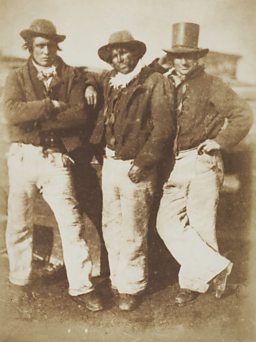
When Queen Victoria took a train to Paris, in 1855, on her state visit to France, the railway gave her a photographic album of all the sights along the way – not just castles and cathedrals, but the industrial architecture en route. There was nothing nostalgic about this new medium.
Who knows? Maybe your own ancestors took some salt print photos which are hidden in your attic
Above all, these photographers were interested in capturing the present day.
Some of them had started out as jobbing artists, but many more were inspired amateurs, supported by private incomes or colonial careers.
John Wheeley Gutch juggled photography with several day jobs, from diplomacy to surgery. Linnaeus Tripe was an army officer in India, who photographed Hindu temples on his travels.
Who knows? Maybe your own ancestors took some salt print photos which are hidden in your attic. Some of the most striking images in this show, by French photographer Jean-Baptiste Frenet, lay undiscovered for 150 years.
With no predecessors to learn from, you might think these pioneers would be fumbling in the darkness, but remarkably their photos are supremely self-assured. The limitations of their equipment forced them to focus on the basics of composition, and the contrast between light and shade.
"Almost everything that happens in contemporary photography happens here," says Simon Baker, the Tate’s Curator of Photography. "The variation of the results is quite outstanding."
These landscapes are intensely dramatic. These portraits are full of feeling. Nearly 200 years after Talbot’s first experiments, this is photography with a modern eye.
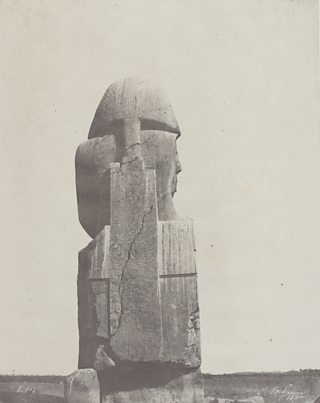
Archaeology was all the rage in Europe in the 1840s, and archaeologists quickly learned to employ photography as a powerful research tool.
French archaeologist August Salzmann used photos of Jerusalem to support his hypotheses, but the Franco-American archaeologist John Beasly Greene elevated archaeological photography to an artform in its own right.
Greene’s stark photos of ancient sites in Algeria and Egypt are almost avant-garde in their simplicity. He died in Cairo in 1856 - still only in his mid-twenties.
The star of this show is Roger Fenton, a lawyer and then a painter, who made his name as a photographer in the Crimean War.
Fenton was supposed to be taking photos to boost the war effort and raise morale, but his penetrating portraits went way beyond jingoistic propaganda.
His haunting photograph of Captain Lord Balgonie of the Grenadier Guards shows this beloved war hero stripped of his smart uniform, with bedraggled hair and wild eyes. He’s only 23. He looks far older.
Balgonie was soon shipped back to Blighty, where he died, aged 25. A century before Don McCullin, war photography had already come of age.
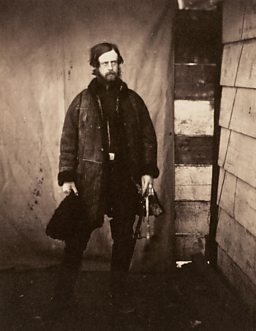
By the 1860s, more sophisticated techniques had rendered Talbot’s method obsolete, but his salt print prototypes retain an artistic aura which more modern photos often lack.
"The images are not on the surface of the paper, like a 20th century photograph," says Simon Baker. "Here, the image is inside the paper." The result is softer and more impressionistic, closer to fine art than cold hard science.
"This is handmade photography, and it quickly became industrialised," says Carol Jacobi, the show’s curator. "We wanted people to get a real appreciation of the distinctiveness of this photographic form."
This show does all that – and more. In our brave new virtual world, photography is all around us. On Snapchat and Instagram, an infinity of images is only a click away.
Now photography is everywhere, it’s lost its air of wonder. Subtle and subdued but full of magic, these fragile photos bring it back.
Salt & Silver: Early Photography 1840-1860 is at Tate Britain, London, from 25 February to 7 June
Related Link


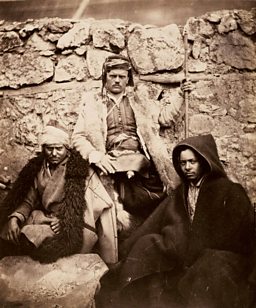
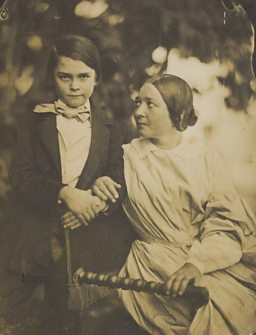
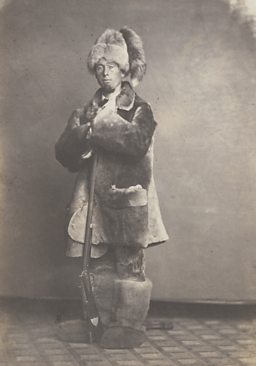


More photography from BBC Arts
-
![]()
War and peace
The compassionate photography of Don McCullin.
-
![]()
Childhood in the 1970s
Tish Murtha’s tender photos of deprivation in Britain.
-
![]()
Neon dreamland
Liam Wong's sci-fi-style images of Tokyo at night.
-
![]()
Pup art
William Wegman's Polaroids of his loyal Weimaraners.
-
![]()
Stanley Kubrick
1940s New York through the lens of teenage Stanley Kubrick.
-
![]()
Jailhouse Rock
Behind-the-scenes photos of Johnny Cash's prison shows.
-
![]()
The real Sin City
Hard-boiled photographs tell the history of crime in LA.
-
![]()
10 years with Kate Bush
Rare photographs of the singer at the height of her career.








